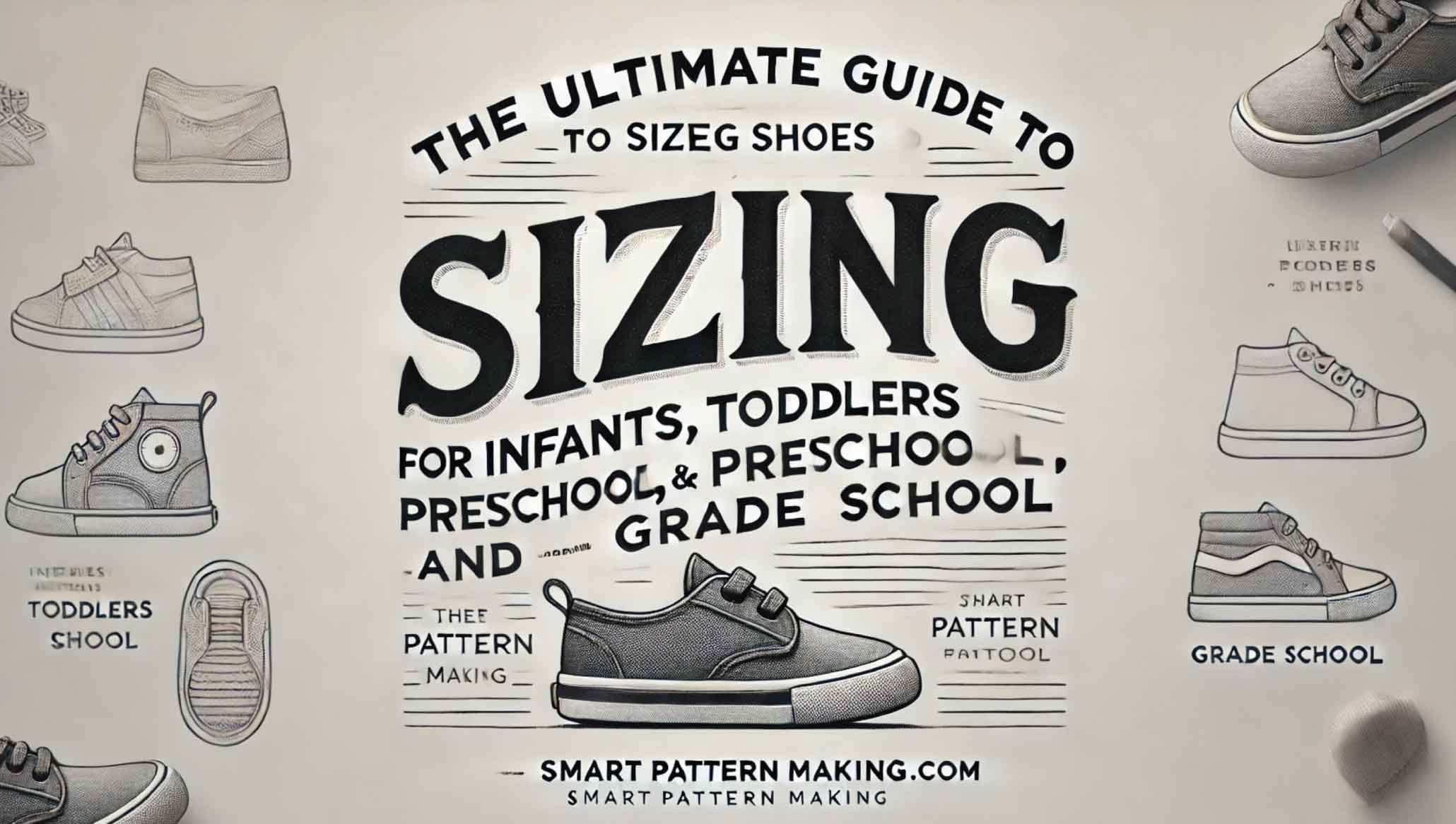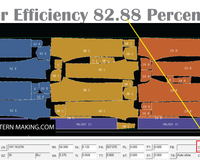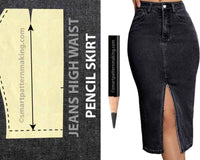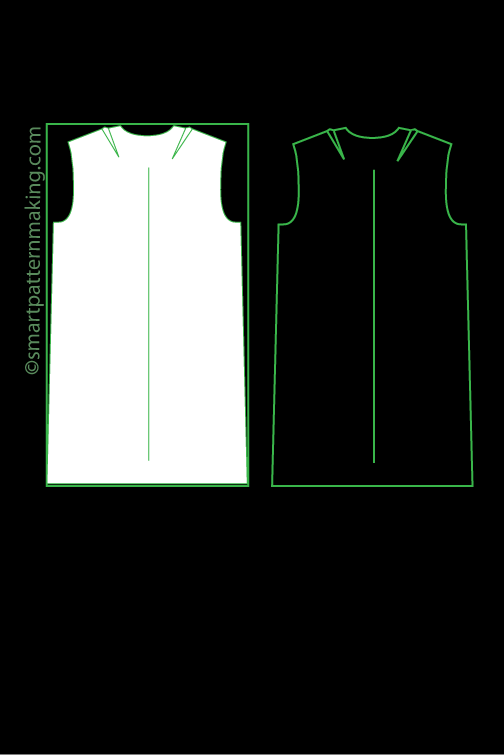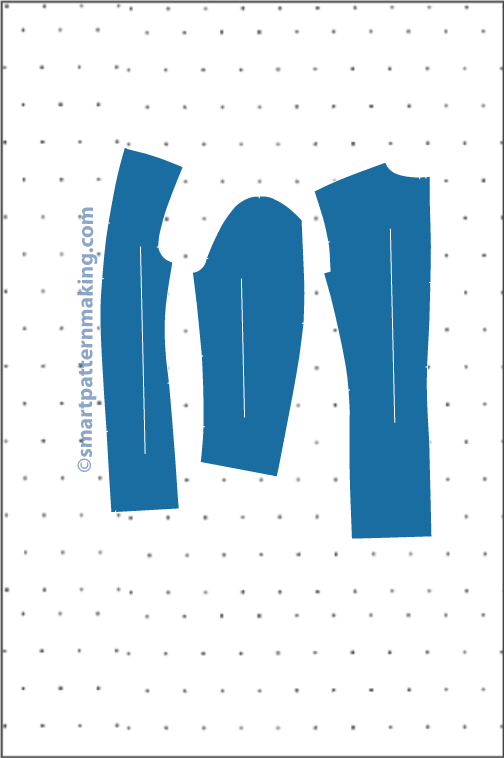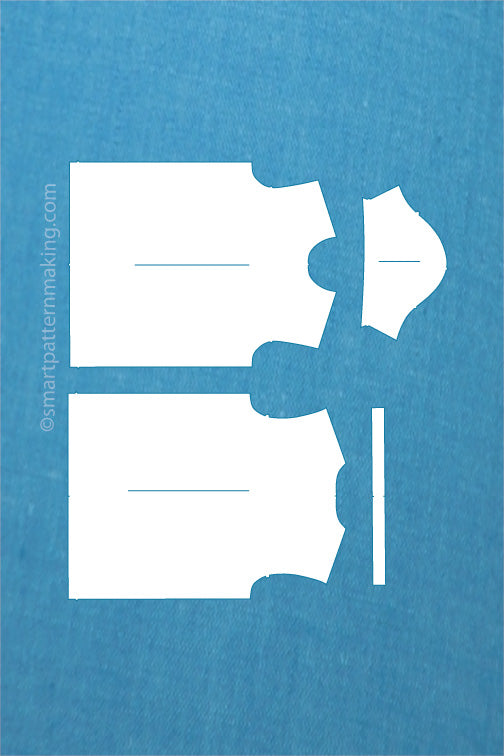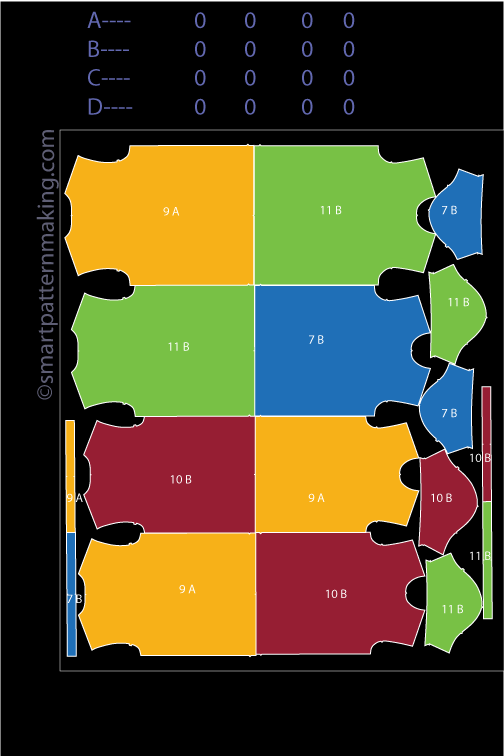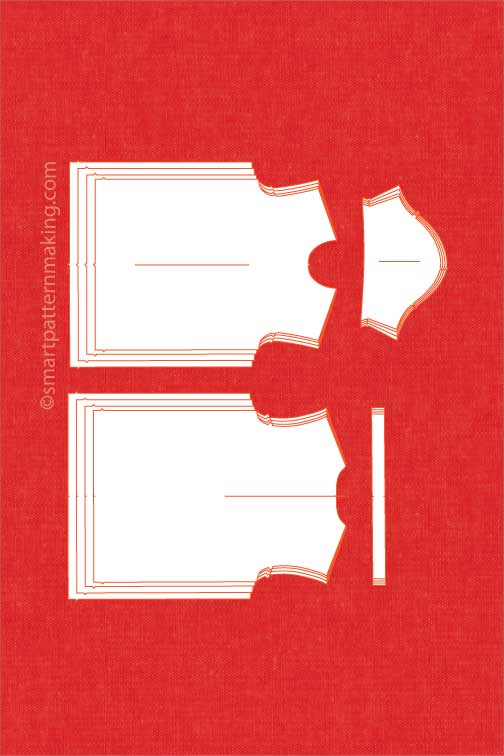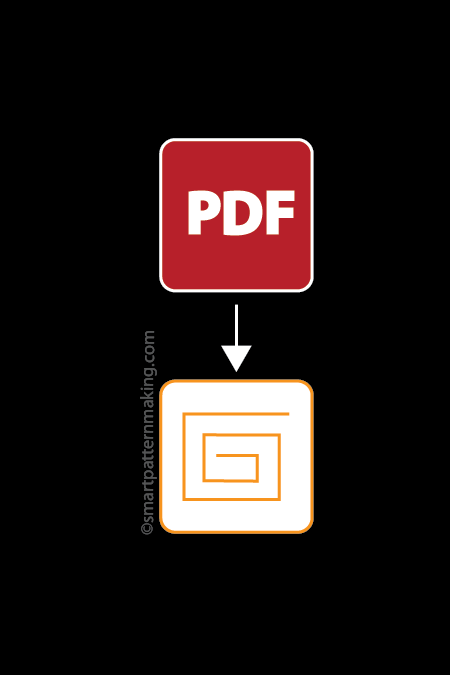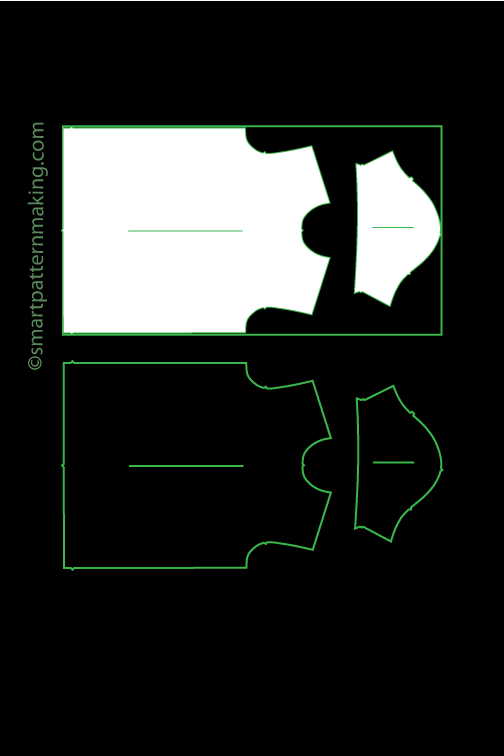Introduction
Sizing shoes correctly for infants, toddlers, preschool, and grade school children is crucial for their comfort and foot health. This guide provides detailed information on shoe size charts, foot measurements, and shoe sizing tips for different age groups. You'll find shoe size chart examples, bullet points, and detailed explanations to ensure you choose the right fit for your child, whether you're considering soft sole shoes or hard sole shoes.
Why Accurate Shoe Sizing Matters
Properly using an infant shoe size chart and an infant foot size chart can make all the difference in selecting the right size for your baby. Understanding infants' shoe sizing and referring to a shoe size guide for infants is essential for ensuring your baby’s foot shape is accommodated, especially when factoring in wide width and Flintstone feet (wide, chubby feet).
Regular use of a foot measuring chart and foot measurement tools will help you stay ahead of your child’s foot growth and ensure a proper size-up when necessary. A size conversion chart or a shoe size conversion chart is also a valuable resource for comparing international sizes, ensuring that your child’s shoes are always the right fit.

Infants Foot Length (Newborn to 12 Months)
Finding the correct shoe size for your baby is crucial, as infants' feet are delicate and rapidly growing. An infant shoe size chart is a helpful tool that allows parents to match their baby's foot length with the corresponding shoe size, ensuring a comfortable fit. Understanding infants' shoe sizing is essential for selecting the right size for both soft sole shoes and hard sole shoes, accommodating your baby's unique foot shape.
By using an infant foot size chart, you can confidently choose the proper shoe size, providing the necessary support and comfort as your baby grows.
Example Foot Size Chart:
| Approximate Age Range | Foot Length (inches/cm) | US Size |
|---|---|---|
| Newborn (0-2 months) | 3.5 inches / 8.9 cm | 0 |
| 0-2 months | 3.75 inches / 9.5 cm | 1 |
| 3-4 months | 4 inches / 10.2 cm | 2 |
| 4-6 months | 4.125 inches / 10.8 cm | 3 |
| 6-9 months | 4.5 inches / 11.4 cm | 4 |
| 9-12 months | 4.75 inches / 12.1 cm | 5 |
Measuring Infant Feet
Measuring an infant's feet accurately is essential for proper shoe sizing. Start by using a printable foot sizing chart and place it on a flat surface. Lay the baby’s foot on the chart, aligning the heel with the baseline. Measure from the heel to the longest toe and compare this measurement with an infant foot size chart to determine the appropriate shoe size. Aligning the child’s instep with the designated lines on the chart helps ensure a good fit, particularly if you need to consider wide width or Flintstone feet. This careful measurement process supports the baby’s comfort and healthy foot growth. Use a foot measuring chart to ensure you have the correct foot measurement.
Tips:
- Measure in the afternoon when the feet are at their largest.
- If possible, have the baby stand while measuring to get a more accurate size.
- To preserve the foot sizing chart for future use, consider laminating it or gluing it to a plastic surface.

Infant Shoe Size Chart by Age
Choosing the right shoe size for your baby is crucial for their comfort and healthy foot development. As babies grow, their feet change rapidly, making it important to select shoes that fit properly at every stage. The Infant Shoe Size Chart by Age helps parents easily determine the correct shoe size based on their baby’s age and foot length, ensuring a snug fit as they explore their world.
A well-fitting shoe supports your baby’s comfort and safety, especially as they begin to crawl, stand, and take their first steps. Regularly measuring your baby’s feet and using this chart will help you select the right size, whether shopping in-store or online.
Example Shoe Size Chart:
| Age (Months) | Foot Length (inches) | Foot Length (cm) | US Shoe Size |
|---|---|---|---|
| 0-3 months | 3.5-3.75 | 8.9-9.5 | 0-1 |
| 3-6 months | 3.75-4.125 | 9.5-10.5 | 1-2 |
| 6-9 months | 4.125-4.5 | 10.5-11.4 | 2-3 |
| 9-12 months | 4.5-4.75 | 11.4-12.1 | 3-4 |
| 12-18 months | 4.75-5.125 | 12.1-13 | 4-5 |
| 18-24 months | 5.125-5.5 | 13-14 | 5-6 |
 Infants Shoe Size Conversion Chart
Infants Shoe Size Conversion Chart
When purchasing shoes for infants, it's important to be aware that sizing can vary significantly across different regions, such as the US (United States), UK (United Kingdom), EU (European Union), JP (Japan), MX (Mexico), AU (Australia), and BR (Brazil). An infant shoe size conversion chart simplifies the process of comparing these sizes, helping parents select the correct fit regardless of where the shoes are purchased. For example, a US size 2 might correspond to a UK size 1.5, an EU size 18, a JP size 10.5, a MX size 10, an AU size 2, and a BR size 15.
Using a shoe size conversion chart ensures that you can confidently choose the right size, promoting comfort and proper foot development for your baby. This tool can be particularly helpful when shopping online or from international retailers, where sizing standards may differ. Additionally, a shoe size chart guide is useful for understanding footwear size conversions across various regions.
International Infant Shoe Size Conversion Chart
| US Size | UK Size | EU Size | JP Size | MX Size | AU Size | BR Size |
|---|---|---|---|---|---|---|
| 0 | 0 | 16 | 8 | 7.5 | 0 | 13 |
| 1 | 0.5 | 17 | 9 | 8.5 | 0.5 | 14 |
| 2 | 1.5 | 18 | 10.5 | 10 | 2 | 15 |
| 3 | 2.5 | 19 | 11.5 | 11 | 2.5 | 16 |
| 4 | 3.5 | 20 | 12.5 | 12 | 3.5 | 17 |
| 5 | 4.5 | 21 | 13.5 | 13 | 4.5 | 18 |
 Toddlers Foot Length (12 Months to 4 Years)
Toddlers Foot Length (12 Months to 4 Years)
Determining the correct shoe size for toddlers is essential to ensure their comfort and proper foot development. As with infants, a shoe size chart for toddlers includes foot length measurements and corresponding shoe sizes, helping parents find the best fit as their child’s feet continue to grow. Whether you’re looking for soft sole shoes for comfort or hard sole shoes for durability, understanding toddlers' shoe sizing is key.
Use this chart to select the right size for your toddler:
Example Shoe Size Chart:
| Approximate Age | Foot Length (inches) | Foot Length (cm) | US Shoe Size |
|---|---|---|---|
| 12-18 months | 4.5 | 11.4 | 4 |
| 12-18 months | 4.75 | 12.1 | 5 |
| 18-24 months | 5 | 12.7 | 5.5 |
| 18-24 months | 5.125 | 13.0 | 6 |
| 2 years | 5.25 | 13.3 | 6.5 |
| 2 years | 5.5 | 14.0 | 7 |
| 2.5 years | 5.625 | 14.3 | 7.5 |
| 2.5-3 years | 5.75 | 14.6 | 8 |
| 3 years | 6 | 15.2 | 8.5 |
| 3-3.5 years | 6.125 | 15.6 | 9 |
| 3.5-4 years | 6.25 | 15.9 | 9.5 |
| 4 years | 6.5 | 16.5 | 10 |
 Measuring Toddler Feet
Measuring Toddler Feet
For toddlers, accurate foot measurement is crucial for selecting the right shoe size. Use a printable foot sizing chart and have your toddler stand on the chart, aligning the heel with the baseline. Measure from the heel to the longest toe and use the toddler foot size chart to find the correct shoe size. Aligning the child’s instep with the solid lines on the chart can help confirm the fit, particularly for wide-width shoes. These steps ensure the shoes chosen are comfortable and allow for healthy foot growth. Using a foot measuring chart regularly can help you stay ahead of your child’s foot growth and ensure a size-up when necessary.
Tips:
- Measure with the child standing to get a more accurate measurement.
- Account for foot growth by considering shoes with a little extra space.
- Laminate or glue the foot size chart to a plastic surface to preserve it for future use.
 Toddlers Shoe Size Conversion Chart
Toddlers Shoe Size Conversion Chart
When buying shoes for toddlers, it’s crucial to ensure they fit properly, as toddlers' feet are still developing and need appropriate support. However, shoe sizes can vary significantly between different countries, making it challenging when purchasing from international brands. A toddlers shoe size conversion chart is an invaluable tool that allows parents to accurately convert shoe sizes between various international sizing systems, including US, UK, EU, JP (Japan), MX (Mexico), AU (Australia), and BR (Brazil).
For instance, a US size 6 may correspond to a UK size 5.5, an EU size 22, a JP size 13.5, a MX size 13.5, an AU size 5.5, and a BR size 19. This chart ensures that the shoes you purchase will provide the necessary support and comfort as your toddler's feet grow, no matter where you are shopping.
Using this chart is particularly helpful when navigating the diverse sizing standards across different regions, making it easier to find the right fit for your child and ensuring their comfort and healthy foot development.
International Toddlers Shoe Size Conversion Chart
| US Size | UK Size | EU Size | JP Size | MX Size | AU Size | BR Size |
|---|---|---|---|---|---|---|
| 4 | 3.5 | 20 | 11.5 | 11.5 | 3.5 | 17 |
| 5 | 4.5 | 21 | 12.5 | 12.5 | 4.5 | 18 |
| 5.5 | 5 | 21.5 | 13 | 13 | 5 | 18.5 |
| 6 | 5.5 | 22 | 13.5 | 13.5 | 5.5 | 19 |
| 6.5 | 6 | 22.5 | 14 | 14 | 6 | 19.5 |
| 7 | 6.5 | 23 | 14.5 | 14.5 | 6.5 | 20 |
| 7.5 | 7 | 23.5 | 15 | 15 | 7 | 20.5 |
| 8 | 7.5 | 24 | 15.5 | 15.5 | 7.5 | 21 |
| 8.5 | 8 | 25 | 16 | 16 | 8 | 22 |
| 9 | 8.5 | 25.5 | 16.5 | 16.5 | 8.5 | 22.5 |
| 9.5 | 9 | 26 | 17 | 17 | 9 | 23 |
| 10 | 9.5 | 27 | 17.5 | 17.5 | 9.5 | 24 |
 Preschool Foot Length (4 to 5 years)
Preschool Foot Length (4 to 5 years)
As children enter the preschool age, their feet continue to grow rapidly, making it essential to choose the right shoe size to support their development. A shoe size chart for preschoolers is a valuable tool for parents, helping them to ensure that their child’s shoes fit properly, whether they need wide-width shoes or standard sizes.
Understanding preschool shoe sizing is crucial for selecting the appropriate footwear, as ill-fitting shoes can affect comfort and foot health. The chart below provides guidance on the foot length corresponding to various US shoe sizes, along with the approximate age range for each size.
Example Shoe Size Chart:
| Approximate Age | Foot Length (inches/cm) | US Size |
|---|---|---|
| 4-5 years | 6.5 inches / 16.5 cm | 10 |
| 4-5 years | 6.625 inches / 16.8 cm | 10.5 |
| 4-5 years | 6.75 inches / 17.1 cm | 11 |
| 5 years | 7 inches / 17.8 cm | 11.5 |
| 5-6 years | 7.125 inches / 18.1 cm | 12 |
| 5-6 years | 7.25 inches / 18.4 cm | 12.5 |
| 5-6 years | 7.5 inches / 19.1 cm | 13 |
| 5-6 years | 7.625 inches / 19.4 cm | 13.5 |
| 6 years | 7.75 inches / 19.7 cm | 1 |
| 6-7 years | 8 inches / 20.3 cm | 1.5 |
| 6-7 years | 8.125 inches / 20.6 cm | 2 |
| 7 years | 8.5 inches / 21.6 cm | 3 |
Measuring Preschool Feet
Accurately measuring a preschooler’s feet is key to ensuring comfort and proper fit in shoes. Begin by using a printable foot sizing chart, making sure it is to scale, and placing it on a flat surface. Have the preschooler stand on the chart, with the heel aligned with the baseline. Measure from the heel to the longest toe, then refer to the preschool foot size chart to determine the correct shoe size. Checking the instep alignment on the chart can also help determine whether a wide-width shoe is necessary. These steps contribute to selecting the right shoe size, accommodating the child’s foot growth and comfort. Use a foot measuring chart regularly to stay ahead of your child's foot growth.
Tips:
- Measure in the afternoon, as feet tend to expand throughout the day.
- Ensure the child is standing when measuring to capture their true foot size.
- Preserve the sizing chart by laminating it or attaching it to a plastic surface for repeated use.
 Preschool Shoe Size Conversion Chart
Preschool Shoe Size Conversion Chart
As children move into preschool age, ensuring the correct shoe size becomes even more critical for their comfort and development. A preschool shoe size conversion chart allows you to easily convert between US, UK, EU, JP (Japan), MX (Mexico), AU (Australia), and BR (Brazil) sizes, which is especially useful when buying from international retailers. For example, a US size 12 might translate to a UK size 11.5, an EU size 30, a JP size 18, a MX size 17.5, an AU size 11, and a BR size 28. By using this chart, you can make sure the shoes you buy are the right size, supporting your child's active lifestyle.
Using a size conversion chart can also assist in understanding footwear size differences across various regions, making it easier to shop with confidence no matter where the shoes are purchased.
International Preschool Shoe Size Conversion Chart
| US Size | UK Size | EU Size | JP Size | MX Size | AU Size | BR Size |
|---|---|---|---|---|---|---|
| 10 | 9.5 | 27 | 16.5 | 16 | 9.5 | 26 |
| 10.5 | 10 | 27.5 | 17 | 16.5 | 10 | 27 |
| 11 | 10.5 | 28 | 17.5 | 17 | 10.5 | 28 |
| 11.5 | 11 | 29 | 18 | 17.5 | 11 | 29 |
| 12 | 11.5 | 30 | 18.5 | 18 | 11.5 | 30 |
| 12.5 | 12 | 30.5 | 19 | 18.5 | 12 | 31 |
| 13 | 12.5 | 31 | 19.5 | 19 | 12.5 | 32 |
| 13.5 | 13 | 31.5 | 20 | 19.5 | 13 | 33 |
| 1 | 13.5 | 32 | 20.5 | 20 | 13.5 | 34 |
| 1.5 | 14 | 33 | 21 | 20.5 | 1 | 35 |
| 2 | 1 | 33.5 | 21.5 | 21 | 1.5 | 36 |
| 2.5 | 1.5 | 34 | 22 | 21.5 | 2 | 37 |
| 3 | 2 | 35 | 22.5 | 22 | 2.5 | 38 |

Grade School Foot Length (6 to 12 years)
Tracking your child's foot growth during the grade school years is essential, as their feet can grow rapidly, often requiring a new shoe size every few months. This Grade School Foot Length Chart (6 to 12 years) helps you easily match your child's age with the correct US shoe size and foot length, ensuring a comfortable and supportive fit.
For instance, children aged 7-8 years typically wear a size 3, fitting a foot length of 8.5 inches (21.6 cm). By the time they reach 11-12 years, they might need a size 7, which corresponds to a foot length of 9.75 inches (24.8 cm). Regularly checking their foot size and referring to this chart ensures your child's shoes always fit well, supporting their active lifestyle.
| Approximate Age | US Size | Foot Length (inches/cm) |
|---|---|---|
| 7-8 years | 3 | 8.5 inches / 21.6 cm |
| 7-8 years | 3.5 | 8.625 inches / 21.9 cm |
| 8-9 years | 4 | 8.75 inches / 22.2 cm |
| 8-9 years | 4.5 | 9 inches / 22.9 cm |
| 9-10 years | 5 | 9.125 inches / 23.2 cm |
| 9-10 years | 5.5 | 9.25 inches / 23.5 cm |
| 10-11 years | 6 | 9.5 inches / 24.1 cm |
| 10-11 years | 6.5 | 9.625 inches / 24.4 cm |
| 11-12 years | 7 | 9.75 inches / 24.8 cm |

Measuring Grade School Feet
For grade school children, accurate foot measurement ensures that their shoes fit well and support healthy foot development. Start by printing a printable foot sizing chart to scale and place it on a flat surface. Have the child stand on the chart, aligning their heel with the baseline. Measure the distance from the heel to the longest toe, then consult the grade school foot size chart to select the correct shoe size. Additionally, aligning the child’s instep with the solid lines on the chart can indicate whether a wide-width shoe is necessary. This process ensures that the chosen shoes accommodate the child’s growth and provide the necessary support. Use a foot measurement chart to track changes over time and ensure your child’s shoes are always the right fit.
Tips:
- Measure with the child standing for the most accurate sizing.
- Consider adding a little extra space in the shoes to accommodate growth.
- To maintain the foot sizing chart for future use, consider laminating it or attaching it to a plastic surface.

Grade School Shoe Size Conversion Chart
For grade school children, shoe sizes can vary widely across different regions, making a size conversion chart an indispensable tool. This chart helps parents convert sizes between the US (United States), UK (United Kingdom), EU (European Union), JP (Japan), MX (Mexico), AU (Australia), and BR (Brazil) sizing systems, ensuring that shoes fit correctly no matter where they are purchased.
For example, a US size 4 might correspond to a UK size 3 and an EU size 36. Using a conversion chart ensures that your child’s shoes are both comfortable and supportive, which is crucial during these years of rapid growth and activity. Utilize this footwear size guide to stay informed about international shoe size differences.
International Grade School Shoe Size Conversion Chart
| US | UK | EU | JP | MX | AU | BR |
|---|---|---|---|---|---|---|
| 3 | 2 | 35 | 21 | 21 | 2 | 33 |
| 3.5 | 2.5 | 35.5 | 21.5 | 21.5 | 2.5 | 34 |
| 4 | 3 | 36 | 22 | 22 | 3 | 34 |
| 4.5 | 3.5 | 36.5 | 22.5 | 22.5 | 3.5 | 35 |
| 5 | 4 | 37 | 23 | 23 | 4 | 35 |
| 5.5 | 4.5 | 37.5 | 23.5 | 23.5 | 4.5 | 36 |
| 6 | 5 | 38 | 24 | 24 | 5 | 37 |
| 6.5 | 5.5 | 38.5 | 24.5 | 24.5 | 5.5 | 37 |
| 7 | 6 | 39 | 25 | 25 | 6 | 38 |
Conclusion
Proper shoe sizing is crucial for children of all ages. By using these guides and charts, you can ensure a comfortable and correct fit for infants, toddlers, preschool, and grade school children. Regularly referring to a shoe size chart guide, using tools like foot measuring charts, and consulting a shoe size conversion chart will help you stay proactive in managing your child’s footwear needs. Whether you're shopping for soft sole shoes for a baby or wide-width shoes for a preschooler, these resources ensure that your child’s feet are well-supported and comfortable, allowing them to explore their world with confidence.
Get Our Printable Foot Sizing Chart Here!
Ready to start creating your own fashion and non fashion products? if so, Drop us a chat NOW and we’ll get you started!
Discover all of our Pattern Making, Digitizing, Resizing and Printing services all available to you and let our expert team create your next personal or business fashion products today!
Loved reading this article and founded valuable? If so, Show us some love and buy us a coffee! ☕ :)
Developing tools and creating valuable content takes a lot of hours of work and days of research so that you can have them at your disposal. Also, keeping the content you read (Ads FREE) and operating this website cost a lot of money. So please, consider supporting us, so that we might continue to provide you with more valuable tools, fresh content, and to continue offering you with the best services that you deserve!

